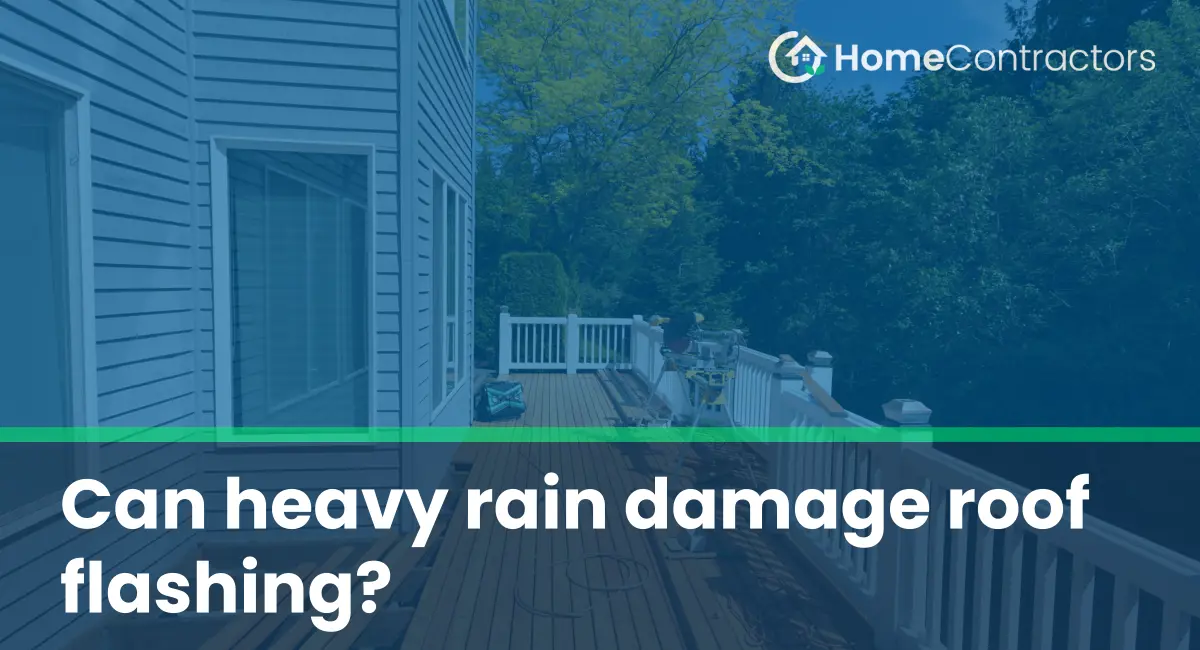Roof flashing is a crucial component of every roofing system. It helps prevent water leakage by providing a watertight seal between the roof’s surface and various protrusions, such as chimneys, skylights, and vents. However, heavy rain can impose significant stress on roof flashing, potentially leading to damage or failure. In this article, we will explore how heavy rain affects roof flashing and discuss preventive measures to protect your roofing system.
Understanding Roof Flashing
Before delving into the impact of heavy rain on roof flashing, let’s first understand what it is. Roof flashing refers to thin pieces of metal, typically made of galvanized steel or aluminum, that are used to redirect water away from vulnerable areas on the roof. It is strategically installed to seal any gaps or joints in areas where the roof meets other building components, ensuring a leak-proof barrier. Commonly, you’ll find flashing around chimneys, skylights, dormers, vent pipes, and valleys.
The Vulnerability of Roof Flashing to Heavy Rain
While roof flashing is designed to be durable and weather-resistant, heavy rainfall can still pose a risk to its integrity. Here are some ways in which heavy rain can damage roof flashing:
- Intense Water Flow: During heavy rainstorms, the volume and velocity of water hitting the roof increase significantly. This intense water flow can put immense pressure on roof flashing, which may cause it to shift, bend, or crack.
- Clogging of Drainage Systems: Roof flashing relies on proper water drainage to function effectively. If the water flow is obstructed due to clogged gutters or downspouts, the excessive buildup can cause water to seep under the flashing, leading to water damage and potential leaks.
- Erosion of Sealants: Most roof flashing installations require the use of sealants to provide an extra layer of protection against water infiltration. However, heavy rain can gradually erode these sealants, compromising their ability to keep water out. Once the sealants break down, moisture can penetrate the flashing joints and cause leaks.
Preventing Damage to Roof Flashing
Protecting your roof flashing from heavy rain damage is essential to maintain the integrity of your roofing system. Here are some preventive measures that can help:
- Regular Inspections: Conduct regular inspections of your roof flashing to identify any signs of damage or deterioration. Look for cracks, gaps, or loose flashing, and ensure all sealants are intact. Promptly addressing any issues can prevent further damage during heavy rain.
- Clearing Debris: Keep your roof and gutters free from debris such as leaves, twigs, and branches. Regularly clean out your gutters and downspouts to prevent clogging, allowing water to flow freely around the flashing.
- Reinforcing Flashing: If your area experiences frequent and heavy rainfall, consider reinforcing your roof flashing with additional layers or installing wider flashing to provide extra protection against water infiltration.
- Professional Maintenance: Engage the services of a professional roofing contractor for regular maintenance and repair work. They have the expertise to assess your flashing system, address any existing issues, and ensure it remains resilient against heavy rain.
While roof flashing is designed to withstand various weather conditions, heavy rain can still cause damage over time. Understanding the vulnerability of roof flashing to intense water flow, clogging of drainage systems, and erosion of sealants is crucial for maintaining a watertight roof. By implementing preventive measures such as regular inspections, clearing debris, and seeking professional maintenance, you can protect your flashing and extend the lifespan of your entire roofing system.
